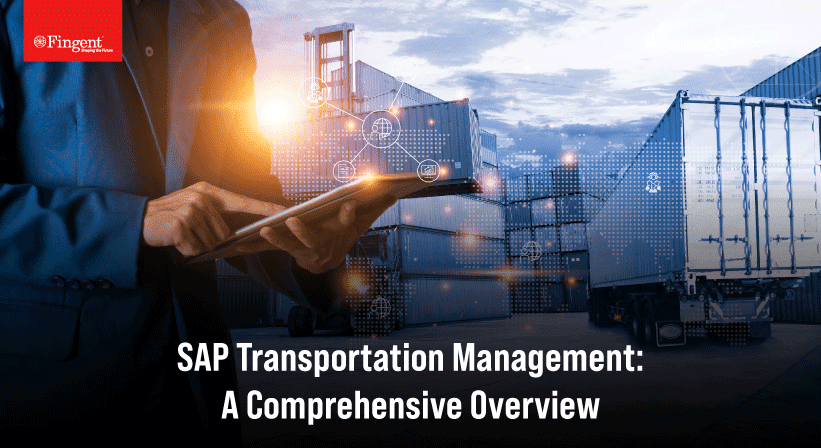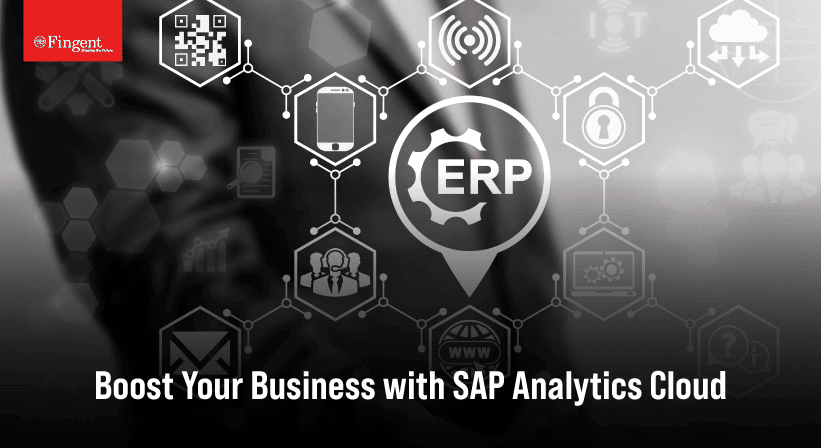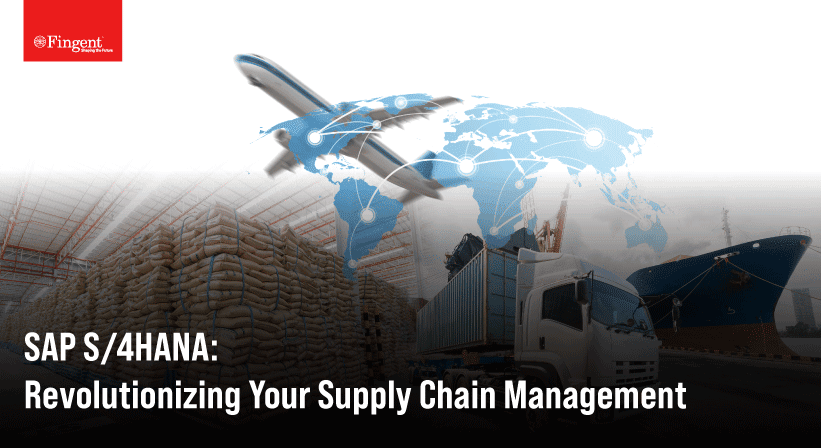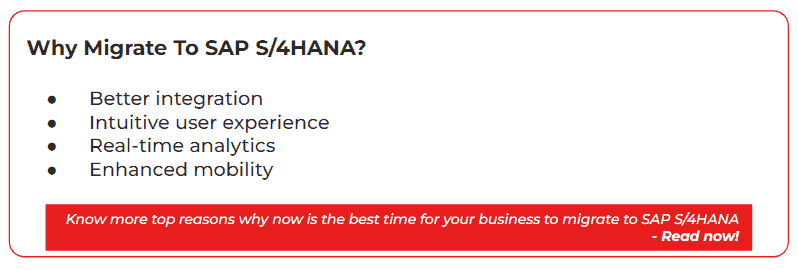SAP S/4HANA Cloud Migration – All that You Need To Know!
“Our future success is directly proportional to our ability to understand, adopt and integrate new technology into our work.” – Sukant Ratnakar – CEO, Quantraz Inc.
Since the dawn of its creation, SAP has been an incredible partner for businesses and organizations. The creator’s dream, to empower customers with the ability to interact with a common database for an all-round range of applications in real-time, continues to thrive even today. Many businesses that are already SAP customers are migrating to the fresh and new S/4HANA module. This comes as no shock, seeing as how beneficial this module is to business process workloads and applications.
If you plan to make this smart shift too, keep reading to better prepare yourself for this adventure!
What Is S/4HANA?
Before we delve into the need and benefits of this new SAP module, let us first re-learn its basics.
S/4HANA is an ERP business suite built on the SAP HANA in-memory database that allows businesses to manage transactions and analyze company data in real-time. It is the central focus, or “digital core,” of SAP’s approach to helping clients go through digital transformation.
Digital transformation allows businesses to change current workload processes and models or build new ones. As a result, they are more equipped to adapt to shifting market conditions, client needs, and business requirements. According to 6sense, SAP S4/HANA currently has 25,595 satisfied customers across the globe, and according to SAP Insider, 24% of businesses have already migrated to S/4HANA.
The Need To Migrate!
Consistently upgrading and migrating to newer technology is a necessity for businesses today. Although you may feel like you have time before you absolutely need to upgrade to S/4HANA, it is imperative that you start the SAP S/4HANA transformation process as soon as possible. Listed below are two reasons why:
1. Time-Intensive Planning Requirements.
The conversion process may take two years or longer, depending on how complicated your system is. This is especially true if you want to pursue an agile and flexible strategy that reduces risks and effects on the business and offers an easier return on investment! Remember that for a successful and low-risk system conversion, data streamlining—including cleaning tasks, customizations, and licenses – must also be taken into account.
2. Avoid Chaos In 2027.
Starting in 2027, SAP Business Suite 7 (including SAP ECC 6) will no longer be supported by SAP. Their consulting partners will be in more demand over the coming years to assist companies with upgrades in order to meet this deadline. Experts in SAP and cloud computing are in high demand, and the longer you wait, the harder it will be to locate qualified assistants who will not take advantage of the hurry and charge exorbitant fees for their services.
Top Benefits
The benefits of migration are strong, which makes it all the more important to take that leap. Businesses will be able to concentrate on development and expansion rather than the technical details of integrating several IT systems when they use S/4HANA. According to studies, S/4HANA has the following benefits:
- 10%-15% lower logistics costs
- 25%-30% shorter manufacturing cycles
- 10%-15% higher productivity
Flexibility is the greatest perk of this module. SAP HANA offers flexible access to any users who desire to utilize it with ease.
Listed below are a few major reasons why you should migrate to S/4HANA:
1. Enhanced Accuracy Due To Analyses
Simplifying data structures and introducing the Universal Journal have made it possible to slice and dice data in real-time using the capabilities of an in-memory HANA database This accelerates accurate analysis. As a result, with a few straightforward visualization tools like SAP Analytics Cloud, you can quickly access precise data.
2. Simplification
Every piece of data is automated. This makes it easy for businesses to develop suitable strategies even when expanding. Real-time insights will also be referenced in the attractive layouts and user-friendly interface. As a result, businesses will be able to process data online and instantly modify things through devices.
3. Agile And Innovative
When implementing standard and commoditized business processes, you can concentrate on those that give you a competitive edge over your competition. It is considerably simpler to integrate with other best-of-breed applications due to the straightforward data structures and simple integration with the public cloud innovation platform. A flexible architecture is the foundation of invention and agility. Other benefits include increased productivity, enhanced user experience, resilience, and many more.
The Best Strategy To Migrate
The procedure of migration to S/4HANA is an important part of your business’s legacy. Simply put, this process includes two parts: first, to upload all applications and important workloads onto the cloud, and second, to upgrade to S/4HANA.
Listed below are 3 best practices to keep in mind during migration:
1. Preparing For Migration.
Your network needs to be ready for cloud connectivity before you can plan to migrate workloads to the cloud; this is effectively connecting your data center to the cloud. This step also includes deciding what to streamline, what you want to preserve, and what aspects to improve. Examine all your business data and separate what is important from the ones that need little to no attention.
2. Organize And Enhance Your Hybrid Landscape.
Nobody switches over all of their SAP operations from on-premises to cloud-based S/4HANA at once. Instead, SAP clients usually move the least important programs first, then add more as needed. It is necessary to identify the criteria for data conversion, data mapping, and data quality. Take it slow, giving proper attention to details.
3. Seek Out A Selectivity-Focused Migration Partner.
A good migration partner who focuses on SAP transformation projects might provide mix-and-match strategies that let you choose exactly which components to use in your S/4HANA migration. All your questions will be answered effectively, and they will be able to guide you throughout the transformation process and beyond.
How Can Fingent Help?
The secret to accomplishing your IT and business goals is choosing the best S/4HANA solution for your industry. Here at Fingent, our strategy combines preconfigured solutions, industry-specific templates, automation solutions, modular and agile frameworks, and the finest SAP activation methodology. Our unique and customized service has catered to many successful businesses.
We assist you in integrating strategy, technology, and processes to make sure that the right insights and procedures are driving your business. We have a team of professionals to help guide you through your migration process and help you make a success of your migration.
Give us a call today.
Stay up to date on what's new

Recommended Posts

23 Aug 2023 Logistics B2B
SAP Transportation Management: A Comprehensive Overview
SAP software, as most of us know, is a tool used to control all aspects of critical business functions specifically. It integrates and automates key processes, ultimately helping organizations run……

10 Aug 2023 B2B
Boost Your Business with SAP Analytics Cloud
Regardless of its size, every business needs to work seamlessly with perfect efficiency to stand out and be noticed. Among the many different essentialities that course through the veins of……

30 Jul 2023 B2B
SAP Customer Experience: Creating Seamless Omni-Channel Experiences
Businesses find themselves at a critical juncture as customer expectations soar and their loyalty hangs by a thread. The key to captivating and retaining customers lies in mastering the art……

28 Jun 2023 Logistics B2B
Top 5 Ways SAP S/4HANA Can Improve Your Supply Chain Management
SAP S/4HANA is a catalyst for business success, weaving its transformative power across the ERP landscape. SAP S/4HANA is more than just any software; it's a realm of possibilities. It……
Featured Blogs
Stay up to date on
what's new












